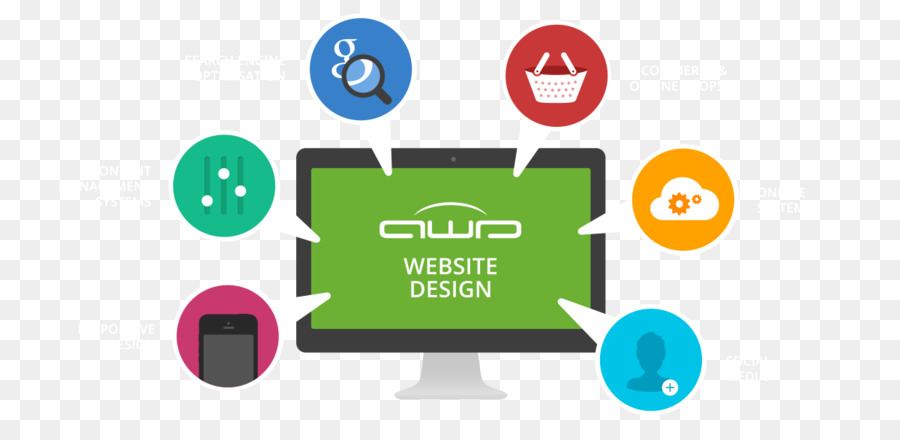The Advancement Of Web Design: Then And Now
The Advancement Of Web Design: Then And Now
Blog Article
Write-Up By-Kahn Lunde
In the past, websites were easy and concentrated on info. Navigation was straight, and layout was for desktop computers. Now, individual experience is vital. Data overviews styles for easy navigating. Responsive layouts match various tools. Today, dark setting minimizes stress, and minimal food selections enhance navigation. Interactive functions involve individuals, and strong visuals stick out. AI assimilation improves engagement. See exactly how design has actually evolved to boost your on-line trip.
Early Days of Web Design
In the early days of web design, simplicity preponderated. Sites were fundamental, with restricted shades, font styles, and formats. The emphasis was on providing details instead of flashy visuals. Individuals accessed the internet with sluggish dial-up links, so rate and capability were key.
Navigation menus were straightforward, generally situated on top or side of the web page. Web sites were created for desktop, as mobile surfing wasn't yet prevalent. visit the following website page was king, and developers prioritized easy readability over complicated layout aspects.
HTML was the primary coding language used, and developers needed to function within its constraints. Animations and interactive attributes were minimal contrasted to today's criteria. Sites were fixed, with little vibrant material or customized customer experiences.
Surge of User-Focused Layout
With the advancement of web site layout, a change in the direction of user-focused layout principles has ended up being progressively noticeable. Today, creating websites that prioritize customer experience is vital for engaging visitors and attaining service objectives. User-focused design includes understanding the requirements, choices, and behaviors of your target audience to tailor the internet site's format, content, and includes accordingly.
Designers now conduct detailed research, such as user surveys and functionality screening, to gather understandings and responses directly from users. This data-driven approach assists in producing user-friendly navigating, clear calls-to-action, and visually attractive interfaces that reverberate with visitors. By positioning the individual at the center of the design process, internet sites can supply a much more customized and satisfying experience.
Receptive style has actually also emerged as a vital aspect of user-focused style, ensuring that internet sites are enhanced for numerous devices and display sizes. This adaptability improves availability and usability, dealing with the varied means individuals connect with internet sites today. In essence, the surge of user-focused layout indicates a change towards producing electronic experiences that prioritize the needs and expectations of the end customer.
Modern Trends in Web Design
Discover the most up to date patterns shaping website design today. One noticeable trend is dark mode style, offering a smooth and contemporary look while lowering eye pressure in low-light atmospheres. Another vital pattern is minimalist navigation, streamlining menus and improving individual experience by focusing on essential elements. Incorporating micro-interactions, such as computer animated switches or scrolling results, can develop a much more interesting and interactive website. Responsive layout remains crucial, ensuring seamless individual experiences across numerous devices. In addition, utilizing strong typography and asymmetrical formats can include visual interest and draw attention to particular content.
Incorporating AI modern technology, like chatbots for client support or individualized suggestions, enhances customer engagement and improves procedures. https://www.google.com/maps/place/Moon+and+Owl+Marketing/@32.9757271,-106.5344695,1840583m/data=!3m1!1e3!4m6!3m5!1s0x864ddeaa4179705b:0x488d41d2cc6b9750!8m2!3d32.9757271!4d-97.5696258!16s%2Fg%2F11b6mpccrg?entry=ttu&g_ep=EgoyMDI1MDIxMS4wIKXMDSoJLDEwMjExNDUzSAFQAw%3D%3D has additionally come to be a considerable pattern, with developers prioritizing inclusive style techniques to satisfy varied user needs. Embracing sustainability by enhancing web site efficiency for speed and performance is one more emerging fad in web design. Collaborating with individual feedback and data analytics to iterate and boost design continually is necessary for staying appropriate in the ever-evolving digital landscape. By embracing these contemporary trends, you can create an aesthetically attractive, straightforward site that reverberates with your target market.
Conclusion
As you reflect on the advancement of site layout from the early days to now, you can see just how user-focused design has become the driving force behind modern-day fads.
Welcome the trip of change and adjustment in web design, always keeping the customer experience at the leading edge.
Keep present with the current patterns and innovations, and never ever quit evolving your method to develop visually magnificent and straightforward sites.
Progress, adjust, and produce - the future of web design remains in your hands.
